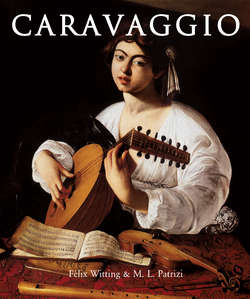Читать книгу Caravaggio - Félix Witting - Страница 4
На сайте Литреса книга снята с продажи.
His Fate
The Early Years and Departure for Rome
Milan
ОглавлениеBoy with a Basket of Fruit, c. 1593. Oil on canvas, 70 × 67 cm. Museo e Galleria Borghese, Rome.
Some early works preserved in Milan from the time when Caravaggio lived in the city, and presumed to be his, have been somewhat neglected by research. Despite the fact that today their attribution to Caravaggio is contested, these works are nevertheless important to our investigation, as they demonstrate certain characteristics typical of his work. Caravaggio developed his tendency towards the monumental genre from the observation of work by the Bergamasque painter Giovanni Cariani (active between 1511 and 1541); in his group of merry companions on a terrace from the year 1519 and in his lute-player he touched on similar motifs to Caravaggio. Later Caravaggio would dedicate himself in a significant way to this imposing genre, though even at the beginning of his career he tended towards the grandiose. In certain of these Milanese works the hand of Michelangelo Merisi’s master can easily be perceived. This master was Bernardino Lanini,[14] in whose work the influence of Gaudenzio Ferrari is clearly recognisable. At this time, Caravaggio seems to have concentrated solely on the physical form of the human figure, depicted simply against a neutral background. Setting aside the classical heritage, the figure takes over the painting. This would become gradually more and more apparent in his work, and eventually one of Caravaggio’s distinguishing features. Caravaggio was also noticeably inspired by the work of Butinone, in particular the evocative motif of Saint Anne surrounded by her family. A certain tautness in a number of his paintings evokes the works of the former Milanese School, and highlights the fact that the young Caravaggio had only a limited number of resources at his disposal, which forced him to fight his way towards the freedom to which he aspired from a young age.
It can be observed that the young artist turned towards portraiture, attracted – as his early works demonstrate – by the realistic representation of genre motifs. The grandeur of his style already marked him out from his contemporaries. On examination of the works of his masters, it can be supposed that it was the exhortations of Gaudenzio Ferrari and his Milanese successor Bernardino Lanini that encouraged him to imitate them.[15] The bright colours used by these two artists can also be found in Merisi’s early works, an aesthetic impression used to great and unusual effect in Caravaggio’s later works. However, Caravaggio demonstrated considerable skill in the modelling of the human form much earlier than the artists mentioned, and he revealed powers of observation only previously seen in another Lombard artist, Guido Mazzoni, who had displayed similar skill with his clay sculptures, notably those in the Church of Santa Anna dei Lombardi.[16] The head of Nicodemus in The Entombment in the Vatican Gallery indicates that he studied the sculptor’s work, which was striking in its naturalism. Likewise, it was probably Lanini who spoke to Caravaggio of Venice, where, after five or six years in Milan, the artist spent some time.
Boy with a Basket of Fruit (detail), c. 1593. Oil on canvas, 70 × 67 cm. Museo e Galleria Borghese, Rome.
Boy with a Basket of Fruit (detail), c. 1593. Oil on canvas, 70 × 67 cm. Museo e Galleria Borghese, Rome.
14
To be compared with J. Burckhardt, op.cit.
15
J. Burckhardt, op.cit., p. 7
16
Ibid.
